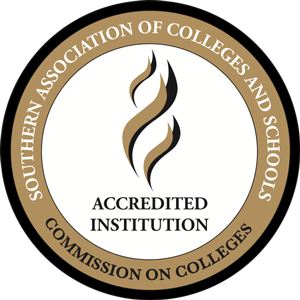Statewide Articulation Reporting System
We are excited that you are interested in continuing your education at Alabama State University.
Alabama State University participates in the Statewide Articulation Reporting System (STARS) program. STARS is a computerized articulation and transfer planning system designed to inform students who attend Alabama community colleges about degree requirements, course equivalents, and other transfer information pertaining to specific majors at each State-funded four-year institution. STARS is an efficient and effective way of providing students, counselors, and educators with accurate information upon which transfer decisions can be made. STARS is the information link between the State’s public two-year and four-year institutions. The STARS database, if used properly, can prevent the loss of course credit hours, can provide direction for the scheduling of course work, and can ease the transition from one institution to another.
To assist students who are in the process and interested in receiving a Transfer Guide should log on to the Internet and access the AGSC/STARS Home Page at http://stars.troy.edu or they may contact the Alabama State University Transfer Specialist via email scantrell@alasu.edu or 334-604-3944.
In September 1998, to facilitate the development of a statewide transfer/articulation program and as mandated by Section 16-5-8 of the Code of Alabama, the Alabama Articulation and General Studies Committee (AGSC) developed a statewide freshman and sophomore level general studies (“general education”) curriculum to be taken at all colleges and universities. The curriculum consists of five areas that outline the minimum general academic content that is covered in the freshman and sophomore years prior to transfer to a four-year institution in Alabama to ensure the . The AGSC general studies curriculum core includes study in the areas of written composition, humanities and fine arts, natural sciences and mathematics, and history, social, and behavioral sciences.
Area I: Written Composition (6 semester hours) Effective written communication skills are essential in a literate society. Minimum requirements include at least 6 semester hours in written composition.
Area II: Humanities and Fine Arts (12 semester hours) Study in the humanities addresses the ability to deal with questions of values, ethics, or aesthetics as they are represented in literature, philosophy, religion, and the arts, and is fundamental to general education. Minimum requirements include at least 12 semester hours in humanities with a minimum of 3 semester hours in literature, 3 semester hours in the arts, and the remaining semester hours from the humanities and/or fine arts.
Area III: Natural Sciences and Mathematics (11 – 12 semester hours) Study in the natural sciences and mathematics emphasizes the scientific method and applies quantitative or inductive reasoning. Minimum requirements include at least 11 semester hours with at least 3 semester hours in mathematics at the pre-calculus algebra level or Finite Mathematics level unless otherwise specified and at least 8 semester hours in the natural sciences which must include laboratory experiences. Disciplines in the natural sciences include but are not limited to, astronomy, biology, chemistry geology, and physics. (Note: Some mathematics courses are offered for 4 semester credit hours. This would account for the variation in hour requirements in Area III.)
Area IV: History, Social, and Behavioral Sciences (12 semester hours) Study in history and the social and behavioral sciences deals primarily with the study of human behavior, social and political structures, and economics. Minimum requirements include 12 semester hours with at least a 3 semester hour course in history and at least 9 semester hours from among other disciplines in the social and behavioral sciences. Disciplines include, but are not limited to, anthropology, economics, geography, political science, psychology, and sociology. Courses should be broad in scope and content, include global or international perspectives, and must emphasize the methods of inquiry in the social sciences.
As a part of the General Studies Curriculum, students must complete a 6-semester hour sequence either in literature (Area II) or history (Area IV). The maximum semester hour total for Areas I-IV is 41-42 semester hours.
Area V: Pre-Professional, Major, and Elective Courses (19 – 23 semester hours) Area V is designated for courses appropriate to the degree/major requirements of the individual student (it may also include electives).
Area V Menu: Major Requirements
ASU undergraduate majors that have specific degree and program requirements (Area V requirements) are listed by clicking here (Area V):
Note: The Area V document shows the total amount of courses required by the AGSC and ASU department for each major. However, each link only details the titles of the additional ASU Area V course requirements for transfers.
|
College of Education |
College of Liberal Arts & Social Sciences |
College of Science Technology, Engineering & Mathematics |
College of Visual Arts & Science |
College of Health Sciences |
College of Business & Administration |
| Biology Education | Communications | Chemistry | Dance | Health Information Management | College of Business & Administration |
| Business Marketing Education | English | Biology | Music Education | Rehabilitation Services | Accounting |
| Chemistry Education | History | Biomedical Engineering BMS Program | Music | CIS | |
| Collaborative Education K6 & 6-12 | Humanities | Computer Science B.S, Programs | Theatre | Finance | |
| Early Childhood Education | Philosophy | Forensic Biology | Visual Arts | Management | |
| Elementary Education | Political Science | Forensic Chemistry | Marketing | ||
| English Arts Education | Psychology | Mathematics | |||
| General Science Education | Social Sciences | ||||
| Health Education | |||||
| History or Social Studies Education | |||||
| Mathematics Education | |||||
| Physical Education |

